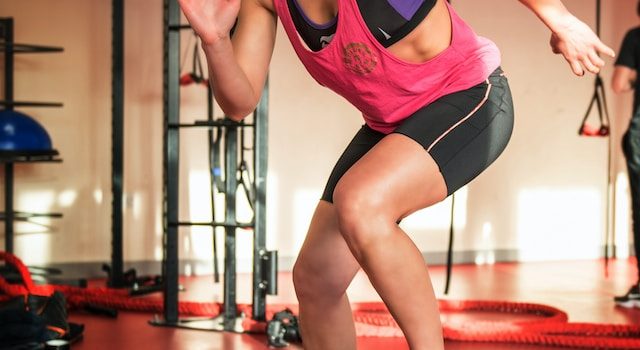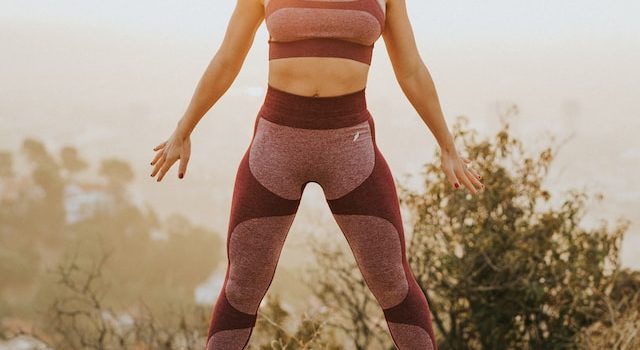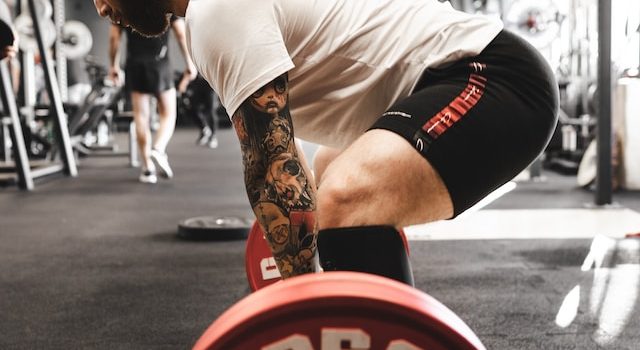
Introduction:
In the realm of fitness, functional training has gained significant popularity as it focuses on exercises that mimic real-life movements. By incorporating functional fitness exercises into your workout routine, you can improve strength, agility, and overall physical performance. In this article, we will explore five functional fitness exercises that can help you boost your strength and agility, enhancing your ability to tackle daily activities and sports with ease.
Breaking News: The Rise of Functional Fitness
Functional fitness has emerged as a preferred training approach for individuals seeking to improve their overall physical abilities. With a focus on movements that mimic real-life tasks, such as lifting, carrying, and bending, functional fitness training has gained recognition for its effectiveness in improving strength, agility, and functional performance.
Feature Story: 5 Functional Fitness Exercises for Strength and Agility
1. Squat to Overhead Press: This exercise combines the lower body strength of a squat with the upper body strength of an overhead press. Start with your feet shoulder-width apart and a dumbbell in each hand at shoulder level. Lower into a squat position, then explode upward while simultaneously pressing the dumbbells overhead. This exercise targets multiple muscle groups, including the legs, glutes, core, and shoulders, improving overall strength and coordination.
2. Farmer’s Carry: The farmer’s carry is a simple yet effective exercise that mimics the act of carrying heavy objects. Hold a weight in each hand, such as dumbbells or kettlebells, and walk forward while maintaining an upright posture. This exercise primarily targets the muscles of the forearms, grip, core, and legs. The farmer’s carry enhances grip strength, improves core stability, and develops functional strength for carrying loads in daily activities.
3. Lunge with Rotation: The lunge with rotation exercise combines the lower body stability of a lunge with the rotational movement of the upper body. Begin by stepping forward into a lunge position. As you lower into the lunge, rotate your torso in the direction of the front leg. This exercise engages the quadriceps, glutes, hamstrings, core, and obliques, promoting leg strength, hip mobility, and rotational stability.
4. Medicine Ball Slam: The medicine ball slam is a dynamic and explosive exercise that targets the entire body. Hold a medicine ball overhead and forcefully slam it into the ground while squatting down. As you lift the ball back up, repeat the motion in a fluid and controlled manner. This exercise improves power, coordination, and total body strength. It also serves as a great outlet for releasing stress and pent-up energy.
5. Box Jumps: Box jumps are a plyometric exercise that enhances explosive power, lower body strength, and agility. Start by standing in front of a sturdy box or platform. Squat down and jump explosively onto the box, landing with both feet simultaneously. Step back down and repeat. Box jumps engage the leg muscles, particularly the quadriceps, hamstrings, and calves, while also improving coordination and balance.
Opinion Piece: The Importance of Functional Fitness
Functional fitness exercises offer numerous benefits beyond traditional strength training. By mimicking real-life movements, they improve the body’s ability to perform daily tasks and excel in sports and recreational activities. Unlike isolation exercises that focus on specific muscles, functional fitness exercises train multiple muscle groups simultaneously, promoting overall functional strength, agility, and coordination.
Research Techniques: Verifying Information and Uncovering Sources
When researching functional fitness exercises, it is essential to verify information and uncover reliable sources. Here are a few research techniques to consider:
1. Expert Guidance: Seek advice from certified personal trainers or fitness professionals who specialize in
functional training. Their expertise can provide valuable insights into proper form, exercise selection, and progression.
2. Scientific Literature: Consult reputable scientific journals and publications to find studies that support the effectiveness of functional fitness exercises. Look for research conducted by exercise scientists, physiotherapists, or sports medicine professionals.
3. User Reviews and Testimonials: Read user reviews and testimonials from individuals who have incorporated functional fitness exercises into their routines. Their experiences can offer practical insights and perspectives on the benefits and challenges of these exercises.
Adhering to Journalistic Ethics
As a journalist, it is crucial to adhere to journalistic ethics, including presenting accurate information and verifying sources. The exercises discussed in this article are based on research and expert knowledge in the field of functional fitness. However, it is important to consult with a qualified fitness professional before starting any new exercise program, especially if you have pre-existing health conditions or concerns.
Conclusion:
Functional fitness exercises provide a unique approach to improving strength and agility by focusing on movements that mimic real-life tasks. By incorporating exercises such as squat to overhead press, farmer’s carry, lunge with rotation, medicine ball slam, and box jumps, you can enhance your overall physical performance, making daily activities easier and enhancing your athletic abilities. Remember to seek guidance from professionals, verify information from reliable sources, and always prioritize safety in your fitness journey.
















